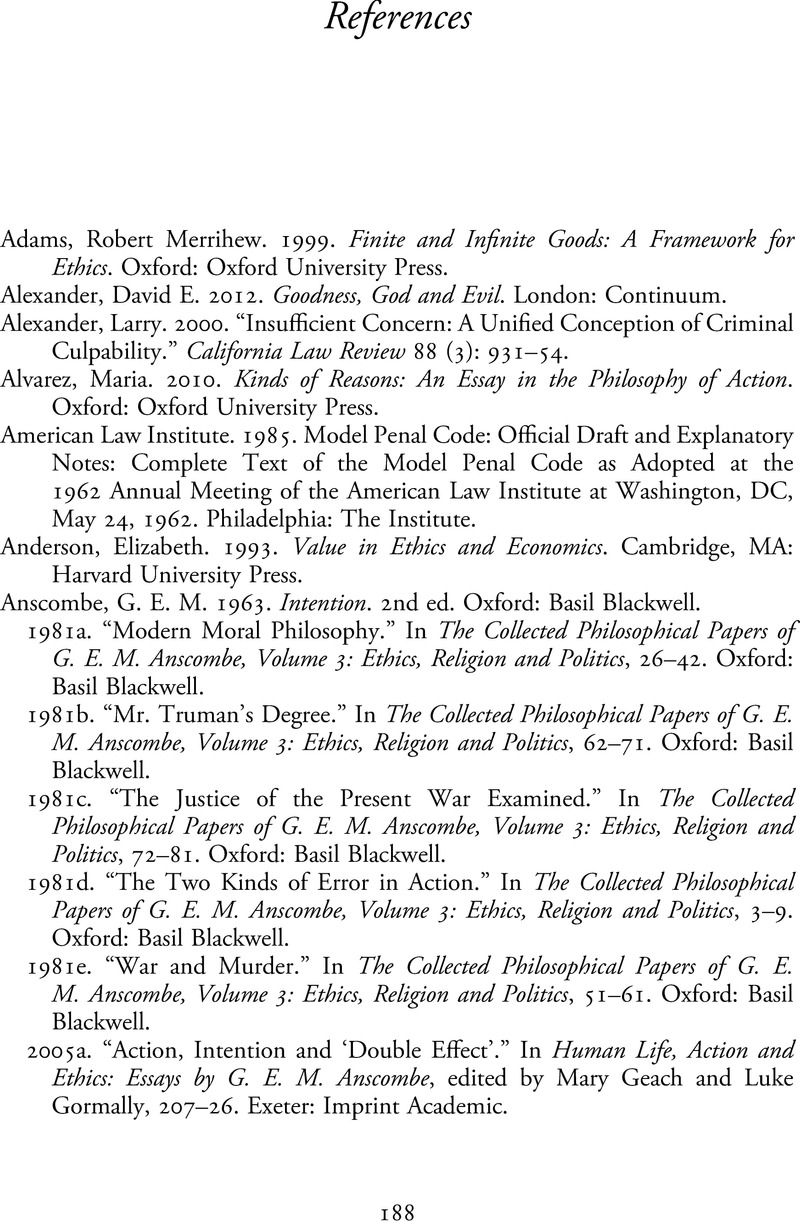Book contents
- Intention and Wrongdoing
- Intention and Wrongdoing
- Copyright page
- Dedication
- Contents
- Preface
- Acknowledgments
- Introduction
- Chapter 1 The Principle of Double Effect
- Chapter 2 The Grounding Challenge
- Chapter 3 Double Effect and the Morality of Solidarity
- Chapter 4 An Anscombian Account of Intentional Action
- Chapter 5 The Closeness Problem
- Chapter 6 The Irrelevance Theory and More Objections
- Chapter 7 Has Cognitive Science Debunked Deontology?
- Conclusion
- References
- Index
- References
References
Published online by Cambridge University Press: 02 December 2021
- Intention and Wrongdoing
- Intention and Wrongdoing
- Copyright page
- Dedication
- Contents
- Preface
- Acknowledgments
- Introduction
- Chapter 1 The Principle of Double Effect
- Chapter 2 The Grounding Challenge
- Chapter 3 Double Effect and the Morality of Solidarity
- Chapter 4 An Anscombian Account of Intentional Action
- Chapter 5 The Closeness Problem
- Chapter 6 The Irrelevance Theory and More Objections
- Chapter 7 Has Cognitive Science Debunked Deontology?
- Conclusion
- References
- Index
- References
Summary

Information
- Type
- Chapter
- Information
- Intention and WrongdoingIn Defense of Double Effect, pp. 188 - 200Publisher: Cambridge University PressPrint publication year: 2021
